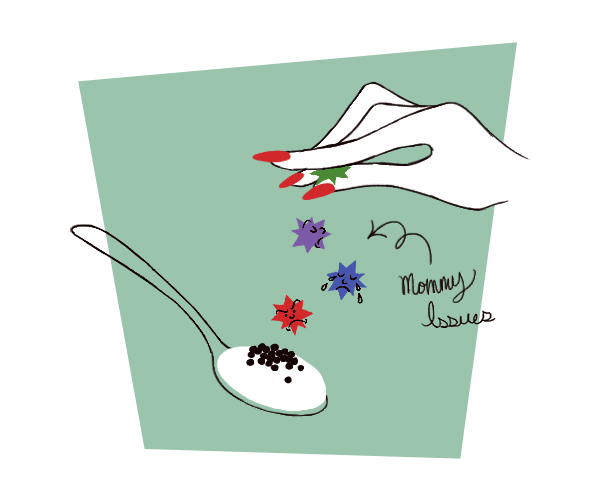During the second episode of Feud: Capote vs. the Swans — producer Ryan Murphy’s streaming series based on author Truman Capote’s lived-in-and-laughed-over 1960s among Manhattan’s “ladies who lunch” — titular actor Tom Hollander truly has his way with spite. Leaning with persnickety dread into a line that all but explains the raison d’etre of biting the hand that fed him; with the 1975 publication of “La Côte Basque 1965,” the initial installment of his long-promised roman à clef, Answered Prayers, Hollander’s Capote spits out the bitchiest of sentiments.
“Why is it so hard for everyone to accept the idea that society is filled with secrets and lies and allegiances and innuendos and that was worth exposing? What do they all think I do, C.Z.? I write. I am always listening. It doesn’t just drift into outer space. I am recording. Because this is the way of our world.”
Ryan Murphy’s screenwriter Jon Robin Baitz and his Feud script show off a sadly-too-true prescience (Truman’s rumored phrase was “What did they expect from me? I’m a writer.”) by highlighting the ever-present lack of privacy that is a 21st century of TMZ, cellphone videos, and doorbell cameras. As one who records and reports all, Capote portrays himself as a mere instrument of truth whose cutting wit, sniper’s accuracy, and fanciful sideway-glanced fact wrap all that he witnessed in the gold leaf of thinly veiled fiction.
When Capote gave readers the torrid tale of “Cleo Dillon” and “Sidney Dillon” within the sordid (and misogynistic) menstrual blood-and-sex-soaked words of “La Côte Basque 1965,” the neo-fiction characters, were, in actuality, Babe and Bill Paley, and based on a real-life incident of the CBS television network head’s repeated infidelity with Happy Rockefeller, the wife of then-Governor Nelson Rockefeller, and her vicious form of revenge at his ending of their affair.
Though other “swans” of Capote’s gatekeeping, high-priestess elites — women who befriended and trusted the author, such as Slim Keith, Gloria Vanderbilt, C.Z. Guest, Carol Matthau and Lee Radziwill — were taken down pegs on the social ladder in the pages of “La Côte Basque 1965,” no one of this new gilded age had been betrayed like Babe Paley.
As a woman who navigated the rocky waters of high society for Capote’s ease of entrance and acceptance, the vulnerable Babe, layawayed by cancer, was the most vulnerable to the writer’s attacks — no matter what names were changed. Ann Woodward, an actress-turned-socialite who accidentally shot and killed her old-money husband William Woodward Jr., and was exonerated for the act, became “Ann Hopkins” in Esquire’s “La Côte Basque 1965”, a gold-digging bigamist who calculatingly murdered her husband. Before the official publishing of November 1975’s Esquire, an already-depressed Woodward committed suicide by taking cyanide. Her mother-in-law said of her death at the time, “She shot my son, and Truman just murdered her.”
Tom Wolfe may have been the godfather of New Journalism, with his mannered writing centered around scathing satire and storied literary techniques, but Truman Capote was the salty fairy godmother of what he called the “nonfiction novel” with hard-hitting, best-selling books such as In Cold Blood.
And for his crimes against them, “this homosexual court jester singing for his supper” (in the words of Baitz) was ostracized from the swans’ inner circle, never to be allowed near again.
If shooting the messenger is wrong, Capote was socially assassinated in a manner far slower than his own sniping. Remember: “I write. I am always listening. It doesn’t just drift into outer space. I am recording. Because this is the way of our world.”
Was Capote’s true talent his poisonous brand of seduction (how he got, then dished out, the greatest and cattiest of gossip’s tidbits) or memory (the skill to utilize the great gossip to its grandest, literary extent)? And isn’t this how Capote made his greatest fame?
Wasn’t his first novel, 1948’s Other Voices, Other Rooms, a barely fictionalized take on his own youth as an effeminate teen after his mother’s death? Didn’t his gritty (turned graceful once Hollywood took hold) novella, Breakfast at Tiffany’s from a decade after his debut signal his arrival to New York City and his making the acquaintance of several ambitious women made into the rich composite character of “Holly Golightly”? Though Capote manufactured quotes and manipulated its sequence of real-life incidents, wasn’t In Cold Blood a starkly hard-boiled, but eloquent read on the chilling 1959 murders of the Clutter family in the farming community of Holcomb, Kansas — a black-and-white newsreel with colorfully fluid, elegant dialogue?
Though at ease with the bitchy stylizing of witty bon mots and cutting, corrosive language (he once told Johnny Carson on national television that the “less intelligent the performer is, the better he is,” before naming Marlon Brando “an absolutely marvelous actor, but so dumb it makes your skin crawl”), Capote had lost his mojo as a novelist after the wild success of In Cold Blood, new form or not. By allowing celebrity and the celebrated to consume him — to say nothing of his ever-increasing consumption of alcohol, pills, and an obsessive relationship with a man who tried to take control of the writer’s business interests — Capote became little more than a caricature of himself, a man with constant, consistent writer’s block who refused to meet deadlines for promised books, magazine features and other manuscripts.
Set adrift in memory’s bliss, the lost Capote of the decade that followed In Cold Blood had little choice but to leap into the fire of the literary form that made him famous; and now, perhaps infamous in his failing upwards. Rather than revolutionize, Capote systematically itemized the worth of those closest to him. New York City’s ladies who lunch, the women known for “brilliant zingers” and “vodka stingers” from the song of Elaine Stritch — and wrote what he knew and knew intimately.
Beyond this algebra of need, the author of the chapters (or excerpts) of Answered Prayers made those around him responsible for their own fates and falls. “You can’t blame a writer for what the characters say,” Capote told Lawrence Grobel for 1985’s Conversations with Capote.
This was reporting, plain and simple with a brand of inundation into the lives and loves of Manhattan’s elites that resembled the six-year-long period when Capote lived among the people of Kansas — the murderers, the murdered and the community — that made In Cold Blood. Only now, Capote’s reportage cut deeper than blood and bone into their hearts and souls.
The name-changes Capote chose to tell the story of how Ann Woodward murdered her husband (as opposed to shooting what she thought was a burglar) in “La Côte Basque 1965″ unspools like a lost chapter of In Cold Blood. Yet, the chore of Côte Basque” would be even more hard-hitting than In Cold Blood as the task of “taking down high society” — as Hollander’s “Capote” states in Feud — is “so much more of a narrow needle to thread.”
With that scripted revelation, “La Côte Basque 1965″ became what used to be known in the journalism business as a “hit piece.” Only this time, the hit comes with a spoonful of Strottarga Bianco caviar, a dollop of crème fraiche, and a handful of mommy issues.

Ebs Burnough, the young director of The Capote Tapes documentary told British Vogue that Babe Paley was Capote’s North Star and became something of a mother figure to him. “She was everything he aspired to be and everything his mother aspired to be. (His mother) had always wanted to be a socialite, so his obsession came from her wanting but not being a part of that world, and then abandoning him as a child. There’s a lot of mother psychology there.”
In avenging the life and death of his mother — a woman who forever sought to bask in the phony luminescence of the high society of her time only to be rejected —Capote sought to satirize and viciously lampoon the great and wealthy of contemporary times. With “La Côte Basque 1965,” Capote tore down the highest of societies and their pettiness, showing the elites lived blindly, shielded from the (then) reality of the struggle for Black rights, the Vietnam War, and America’s increasing poverty. “La Côte Basque 1965″ was where the culture of celebrity and the hunger for dirty laundry gossip began — it was as if Evelyn Waugh’s Vile Bodies had been shot through with an old copy of Hollywood Confidential.
There’s more to it, though, than mere tongue-wagging. In Burnough’s 2019 documentary The Capote Tapes, the writer’s old friend, Dotson Rader says, “When Truman writes about the rich, contempt just bleeds through. His most beautiful writing is about people who don’t have any money, who aren’t famous, who aren’t celebrated — that’s where you see Truman’s heart.”
Capote may have loved his benefactors as he did his mother, but “La Côte Basque 1965″ firmly falls in the former, more contempt-driven category. And if we match that contempt with a memory as deep and knowing as an elephant’s — a sense of remembering that touches on a mother’s want, a need to act out for approval and a journalist’s sense of hardened truth — we’re gifted with the gutted-out glee that is Truman Capote at his best and his worst.•




